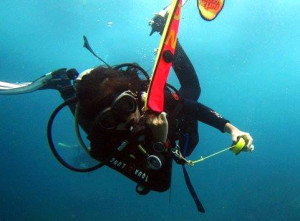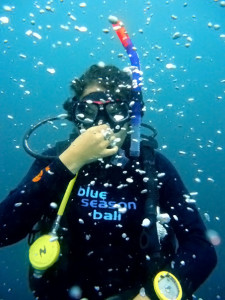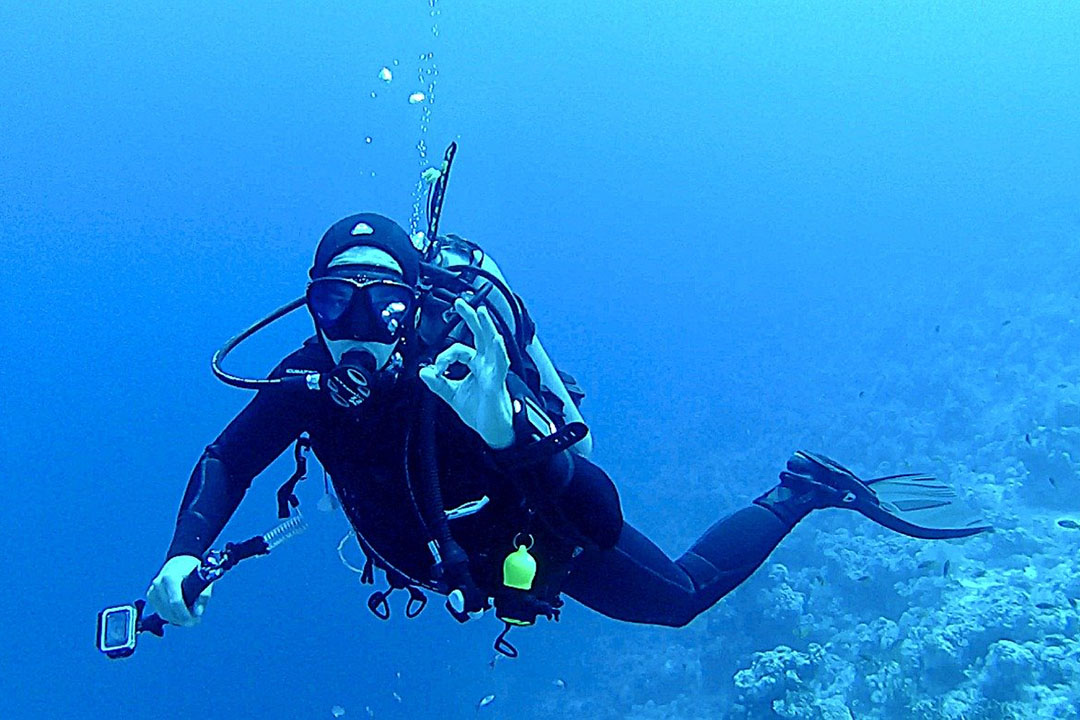This entry is part 1 of 2 in the series Understanding and improving your air consumption
 In my eyes, recreational diving is not a sport. There is no competitive element to it and recreational diving at its best should be an exercise in meditation and a pure enjoyment of the marine environment. Nevertheless, we humans are inherently competitive and usually find a way to determine the ‘winner’ in most activities. Within scuba diving, battles over air consumption have become one of the major outlets for competitiveness. I’m sure you’ve encountered it before and, as internship manager, I see it every day among the Divemaster interns here at Blue Season Bali. Whether someone’s air consumption is fast or slow, it can become a huge source of either pride or embarrassment. This is not always fair and I’d like to use this article to set some things straight, as well as offer some tips on improving your air consumption.
In my eyes, recreational diving is not a sport. There is no competitive element to it and recreational diving at its best should be an exercise in meditation and a pure enjoyment of the marine environment. Nevertheless, we humans are inherently competitive and usually find a way to determine the ‘winner’ in most activities. Within scuba diving, battles over air consumption have become one of the major outlets for competitiveness. I’m sure you’ve encountered it before and, as internship manager, I see it every day among the Divemaster interns here at Blue Season Bali. Whether someone’s air consumption is fast or slow, it can become a huge source of either pride or embarrassment. This is not always fair and I’d like to use this article to set some things straight, as well as offer some tips on improving your air consumption.
Firstly, you need to realise that depth and the corresponding pressure change are the biggest factors in your air consumption. One breath at 30 metres is the same as taking 4 breaths at the surface. That’s just physics mate and no amount of training is going to get you past it. Want your dives to last a little longer? Just take 5 metres off your max depth and start working your way to shallower depths a little sooner. In terms of reefs, the colour and life will consistently be best between 10 and 20 metres so there’s really no need to be any deeper.
Secondly, accept your body! Physiology is just as intractable as physics. A 2 metre tall guy with massive lungs is going to breathe more air than a petite lady with small lungs. One of our previous Course Directors, Baz, is a big guy: tall and weighing in at around 100kg. He is one of the best instructors I’ve encountered: a PADI Course Director, Technical Diving instructor trainer, Cave diver, Wreck diver, dived to 100 metres…etc This guy’s experience and knowledge levels are huge, but put him up against our new petite intern with 40 dives, in an air consumption battle, and he will lose every time. This illustrates wonderfully how underwater ability should not be confused with air consumption.
These are the things you can’t change in terms of air consumption. So next time you see a diver feeling self conscious about how much air they use, please be a good buddy and remind them of the above. That’s all I have time for right now but in the second part of this article I’ll be giving you the inside track on the air consumption tips we give to our professional interns here at Blue Season Bali. Till then, stay classy.




David
Posted at 11:37 am, 17 AprGood article Henley!
Having said all that, the body’s need for Oxygen must also play a big part in air consumption. I was wondering if there are tequiniques (maybe yoga) for relaxing the body and reducing breaths per minute. Not to get longer dives but to get calmer divers.
Henley
Posted at 7:22 am, 23 AprHi David, yes there are several techniques which can be used to actually improve air consumption (including ways of breathing) and I’ll be looking at those in the next 3 sections of this article so stay tuned…
Dave
Posted at 10:06 pm, 17 Aprphysics may be a solid explanation of things you can not change, but there are many you can to conserve air. I see new divers use up air fast all the time. They kick to fast, go up and down too much, have not mastered buoyancy, breath to fast and shallow. So you might want to tell divers what they can do. Having to go up when the first person hits 750 PSI can cheat others for dive time due to no fault of their own. When I go diving after a break my consumption from the fist dive to the third is very different once I settle down.There are easy ways to get 25% off a tank once one knows how. Dave